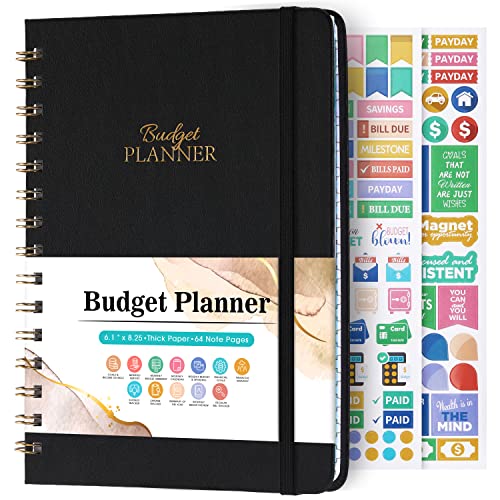Heading towards the new year, you might find yourself toying with the idea of planning a low buy challenge. Whether your intention is to combat clutter at home or just get a grip on your shopping habits, the thought of going low-buy can be intimidating. It doesn’t have to be though! If you’re prepared and understand your aim, you’ll find the challenge much easier and have a better chance of success.
Here’s how to start planning a low buy challenge strategy, whether you’re curious to try out low buying for a week, a month, or a whole year.
Table of Contents
Understand Your Motivation When Planning a Low Buy Challenge
Are you saving up for a major purchase? Trying to pay off debt or buckle down on your retirement savings? Sick of all the clutter around the house? Or just want to reset and reboot your finances? Understanding what your motivation is for wanting to start planning a low buy or no spend challenge will help you stay focused and achieve success.
Grab a pen and pad of paper, or create a new note in your favourite notes app. Make a list of whatever words come to mind: savings, downsizing, clutter, moving preps, minimalism. Anything goes. Have a look at what you wrote and see if you can identify a common denominator.
For a lot of folks, it’s probably going to boil down to getting their finances or a shopping addiction in check.
Once you’ve determined what your ulterior motive is for going low-buy, it’s time to start thinking about the rules you want to lay out for yourself.
Assess Spending and Start Thinking About Rules
The great thing about doing a low buy challenge is that you make all the rules. It’s your journey, and you’ve nobody to report to but yourself. When you start planning a low buy challenge, you’ll want to really reflect on your typical spending habits.
In one of my previous articles about How to Do a Low Buy Year, I outlined the action you can take to assess your expenditures. This is an important step you’ll want to take before you start giving thought to the kinds of rules you want to play by.
When you know where you typically drop your hard-earned money, then you can take those spending categories and start thinking about what will work for you in terms of rules. Again, it’s entirely up to you and your own priorities. What other people define as low-buy spending rules might not work for you. If you live and swear by your 1:1 sessions with a personal trainer every week, there is likely no point in taking that away from yourself. Doing so could set you up for failure.
Start Forming Your Support Network
If you have a spouse, family, or live with others, let them know you’re planning a low buy challenge. This gives them a preliminary heads up that you’ll be making some changes to your budget, and might not be going out to eat much anymore, or doing shopping trips to the mall. Let them know what your motivation is, and why this is important to you. They might turn out to be your biggest cheerleaders throughout your low buy challenge.
If you’re single, you might want to let your friends know for the same reasons. And regardless of your living situation, this planning phase is a great time to start following other like-minded folks (and maybe also unfollowing all those influencers who constantly do hauls).
Check out the #lowbuy tag on Instagram, or search Reddit for “low buy” to find new inspiration. Don’t forget the Minimalist Money category right here on Tidymalism, either!
Declutter and Plan on Using What You Have
Planning a low buy challenge is not an invitation to go out shopping and start hoarding stuff. You should, however, use this phase to start getting into the low-buy mindset. And that means utilising what you already have instead of buying new products. When was the last time you checked the staples in your pantry for soon-to-expire items? Plan on using them up. Ditto for any bath and beauty products you’ve stocked up on, hobby supplies, or the like.
Decluttering prior to going low-buy can be a huge help. You’ll get a better overview of what you already have, what you wear the most, and what you never use. If you don’t have time to do a thorough decluttering, you might want to try out some quick daily decluttering bursts instead. They are easy to fit in here and there when you have a few spare minutes.
Create Interim Wish Lists
A great money-saving tactic to adopt when doing a low-buy challenge is to park any items you want on a wish list. They can stay there indefinitely and you can return to them any time later on down the road. You’ll often discover you no longer want the item.
Go ahead and set up some wish lists during this planning phase, whether it’s in your notepad, note-taking app, or on Amazon. Any time you see an item you want during your low-buy phase, park it on your respective list.
Start Assessing Your Fix Costs
When planning a low buy challenge, it’s a great time to also run through your fix costs like insurance premiums, subscriptions, memberships and so on.
See if there’s anything redundant you’re paying for, or anything you no longer need. Cancelling those is a super way to get your low-buy challenge off to a great start.
Start Thinking About a New Hobby
Once you embark on a low-buy challenge, you’re bound to find more free time on your hands. Abstaining from browsing alone will give you back a few hours each week. Why not take advantage of this, and use the time to pick up a new hobby or learn a new skill? Here are a few ideas for your newly won leisure time!
Giving some thought in advance to your motivation, your spending habits, and what you already own is a great way to start planning a low buy challenge without any stress. You’ll be better prepared when you’re ready to start the actual challenge, more in tune to your personal needs and wants, and better aligned with your goal so you can reach the finish line. I hope these tips get you off to a good start!
Check out the entire Low-Buy Series here at Tidymalism!
– How to Start a Low-Buy Year
– Q1 Update
– How to Do a Low Buy Year: Narrowing Down Categories & Creating Rules
– Q2 Update
– Q3 Update
– Planning a Low Buy Challenge for the New Year
– Q4 Update












Leave a Reply